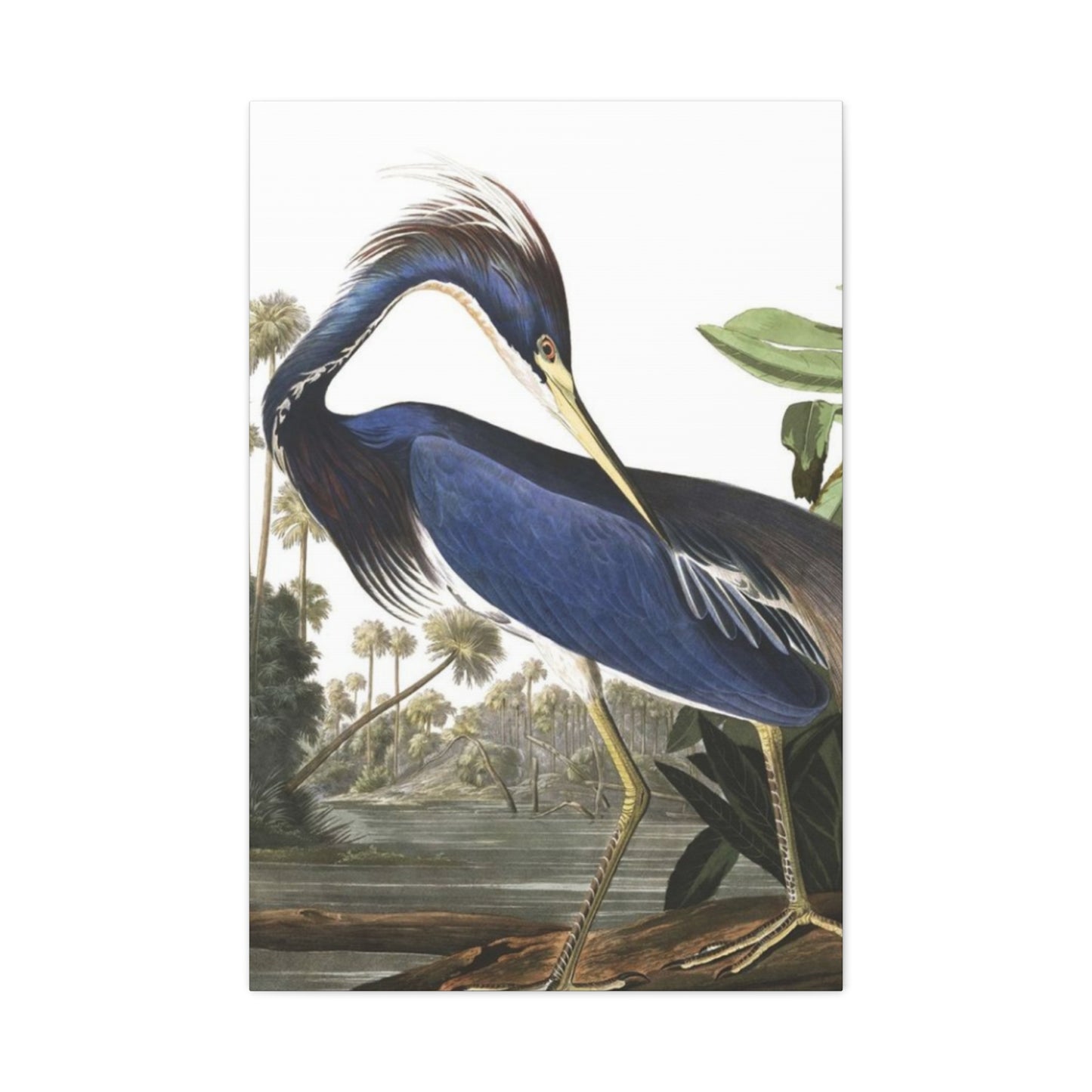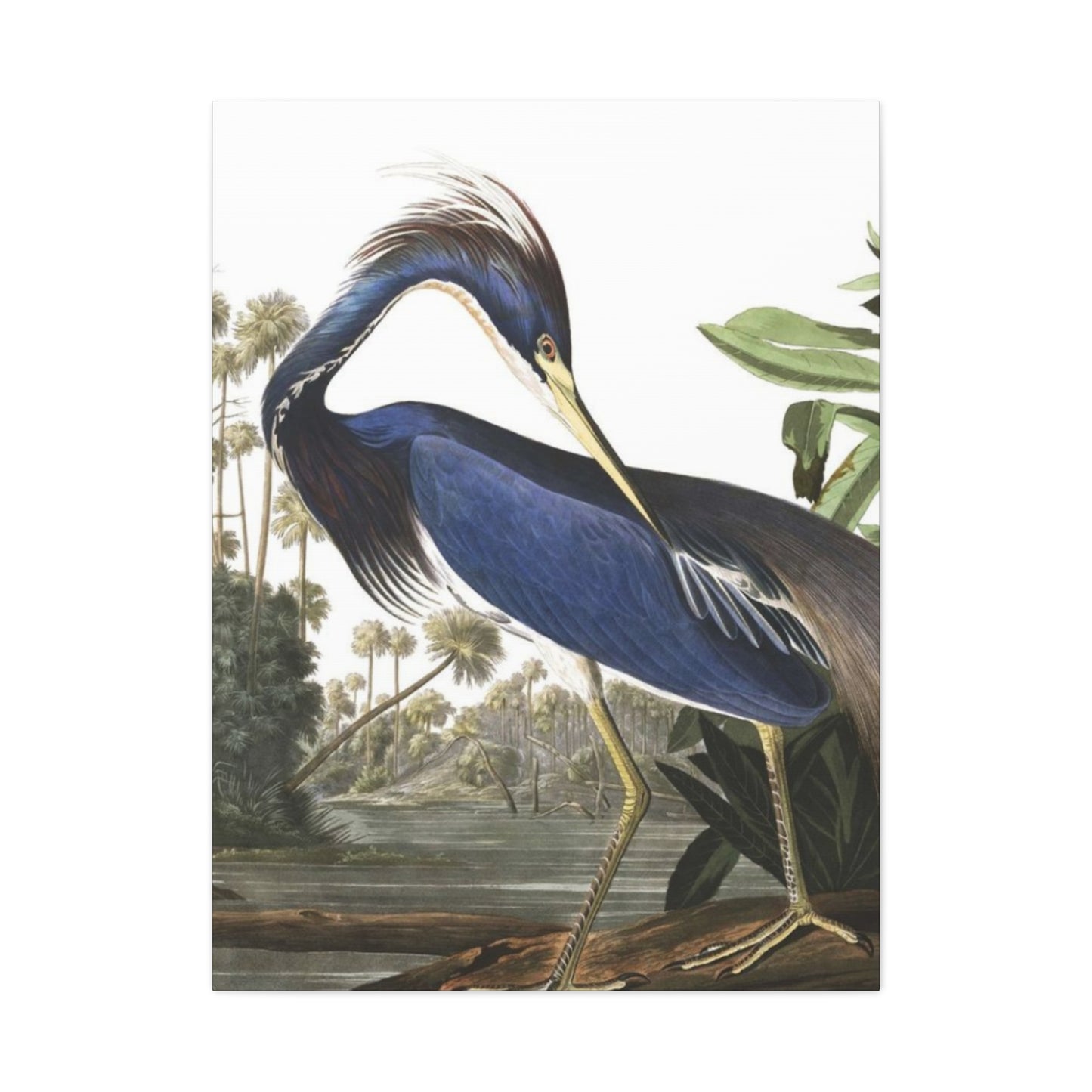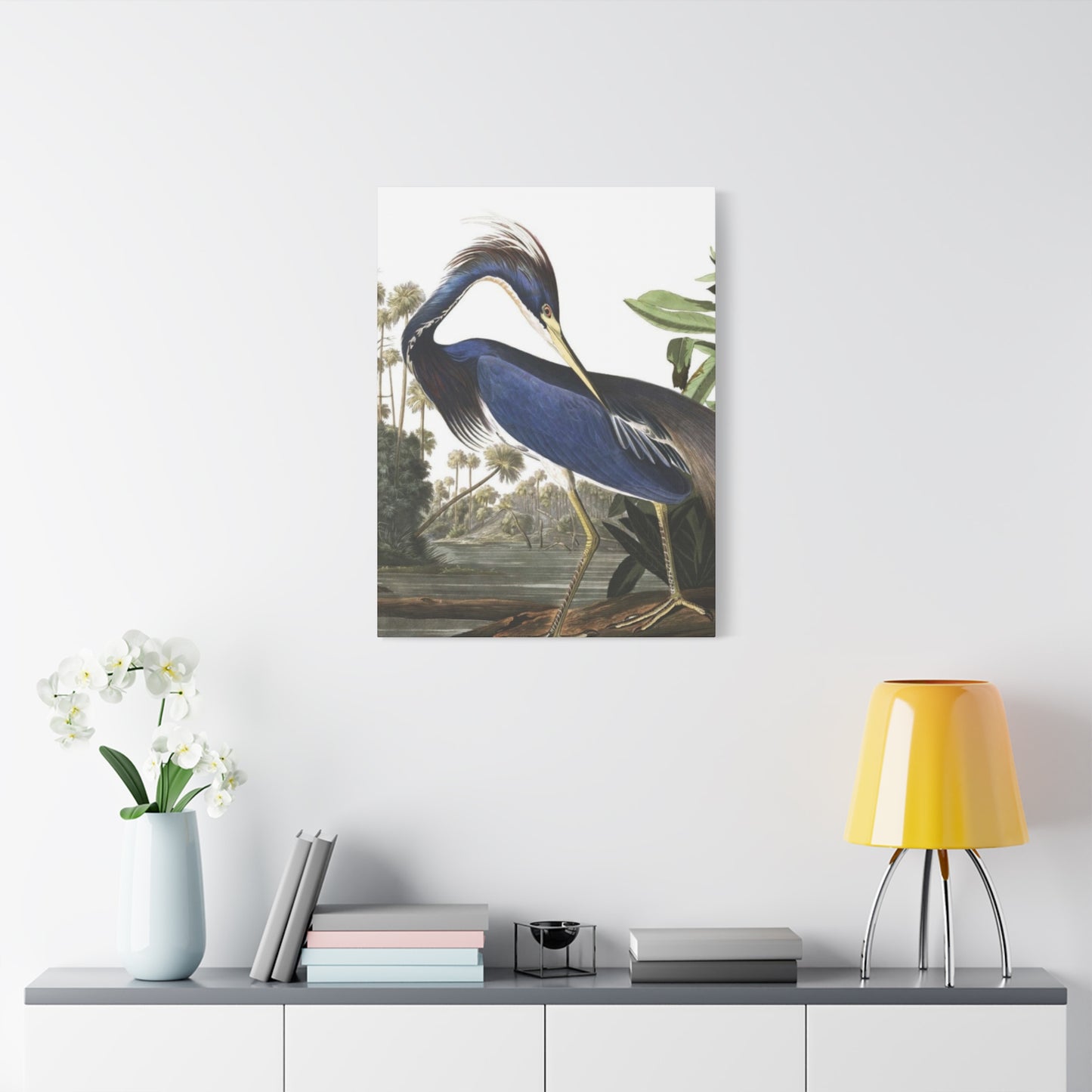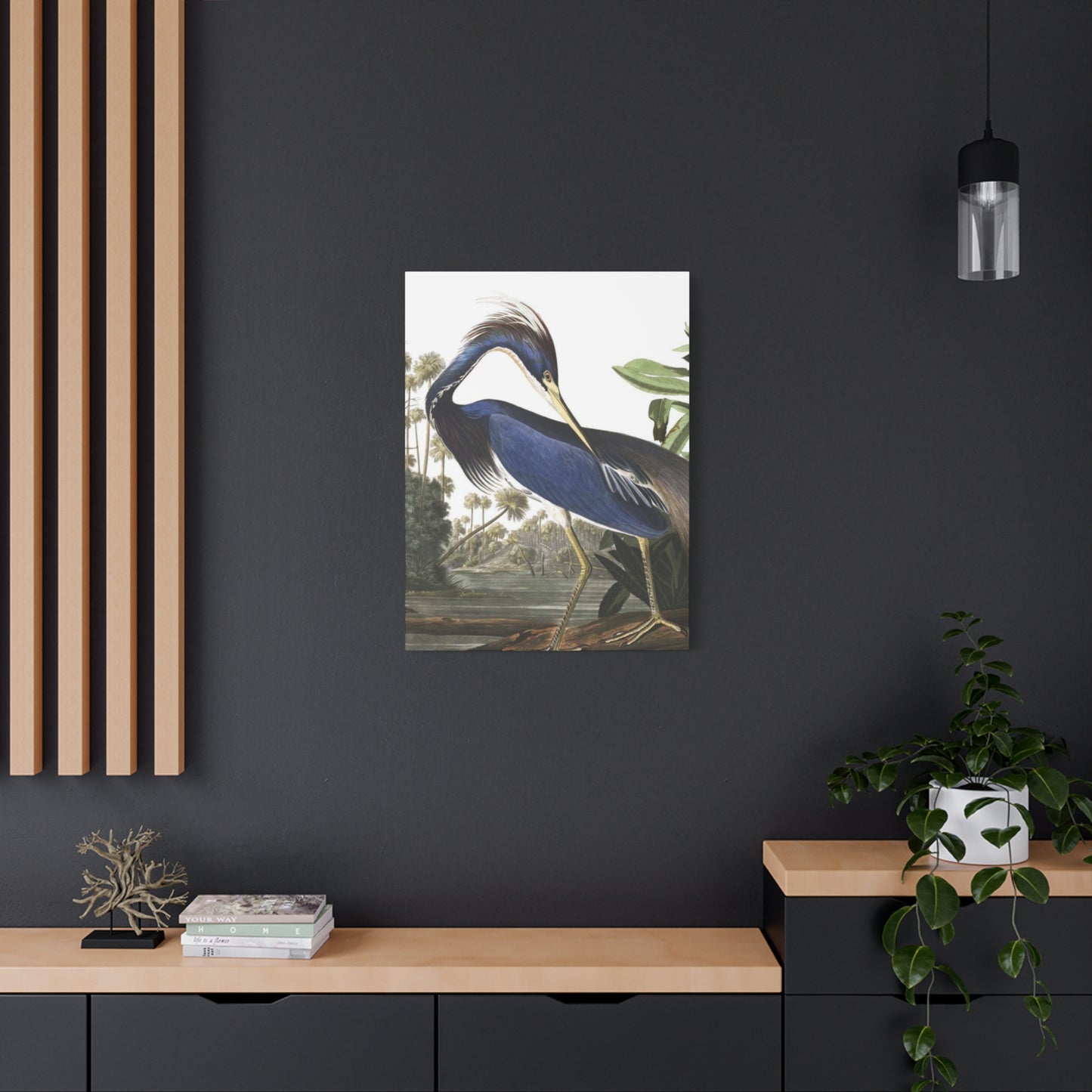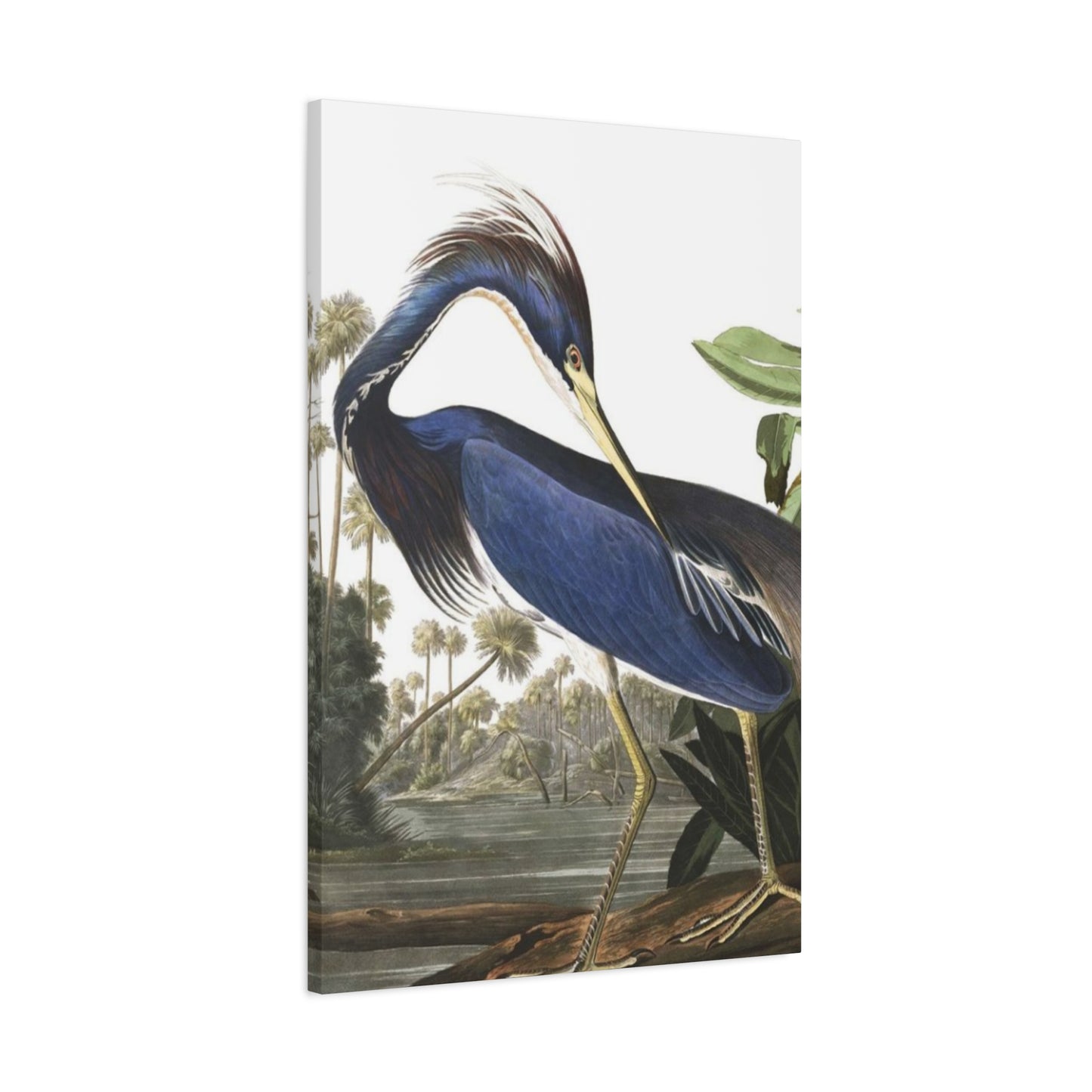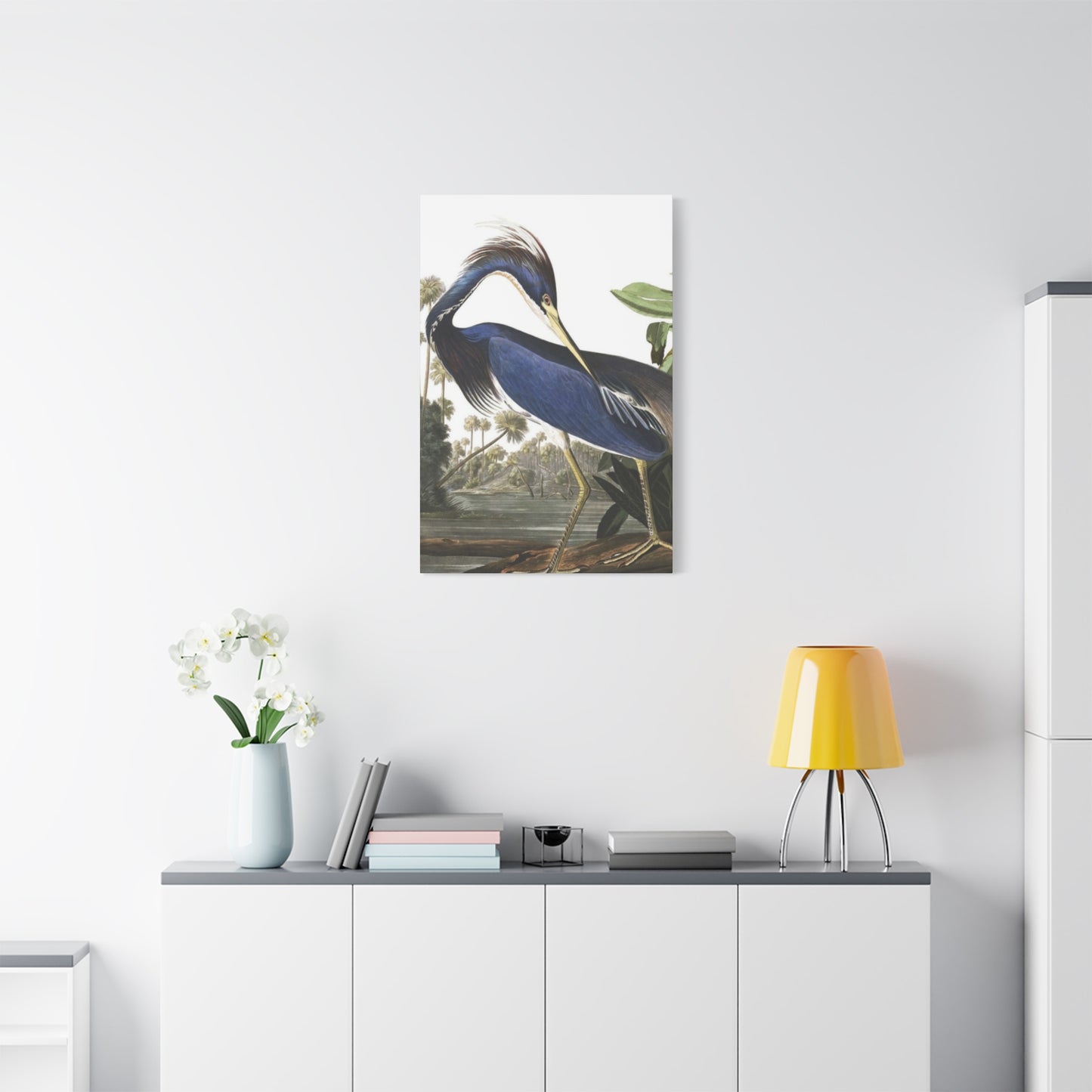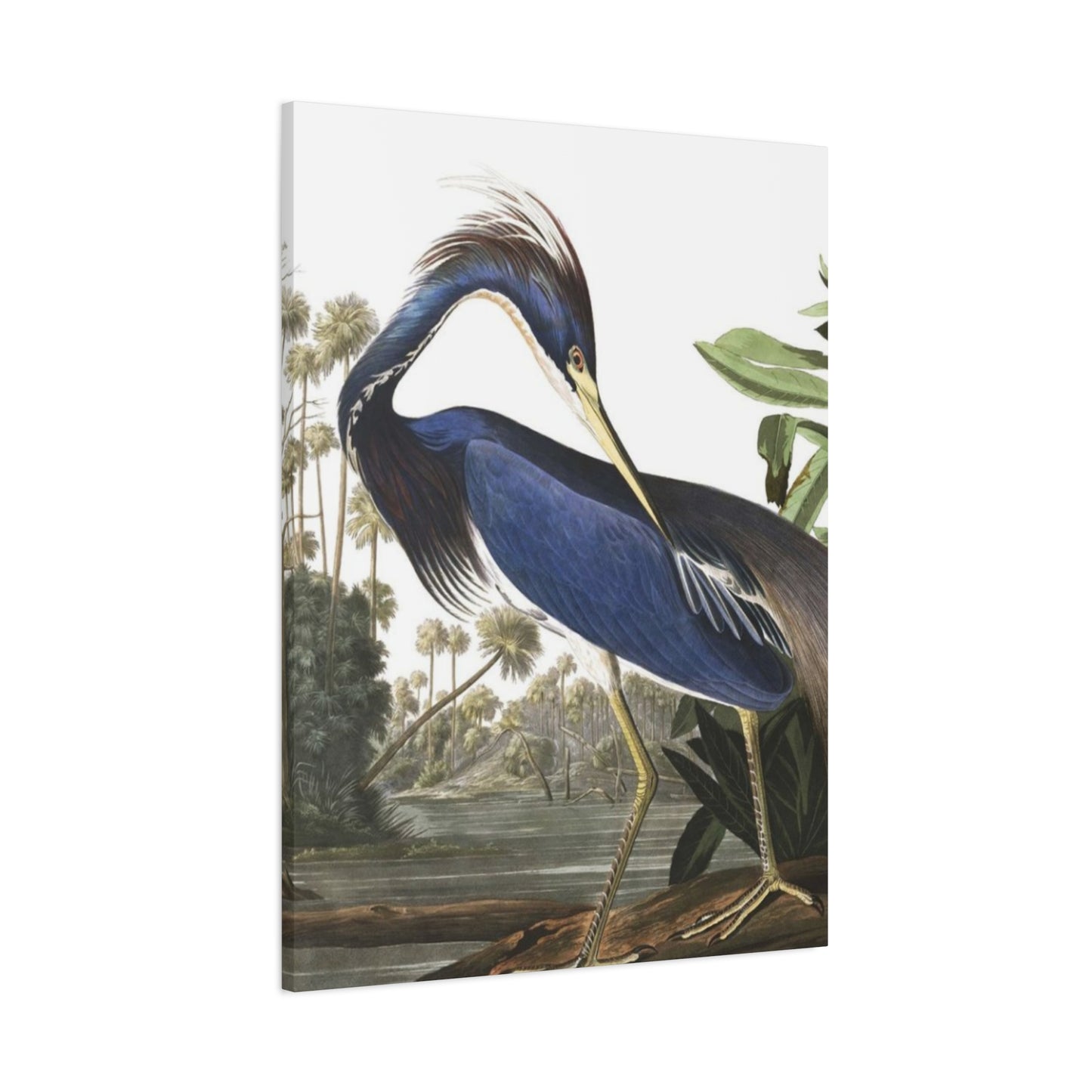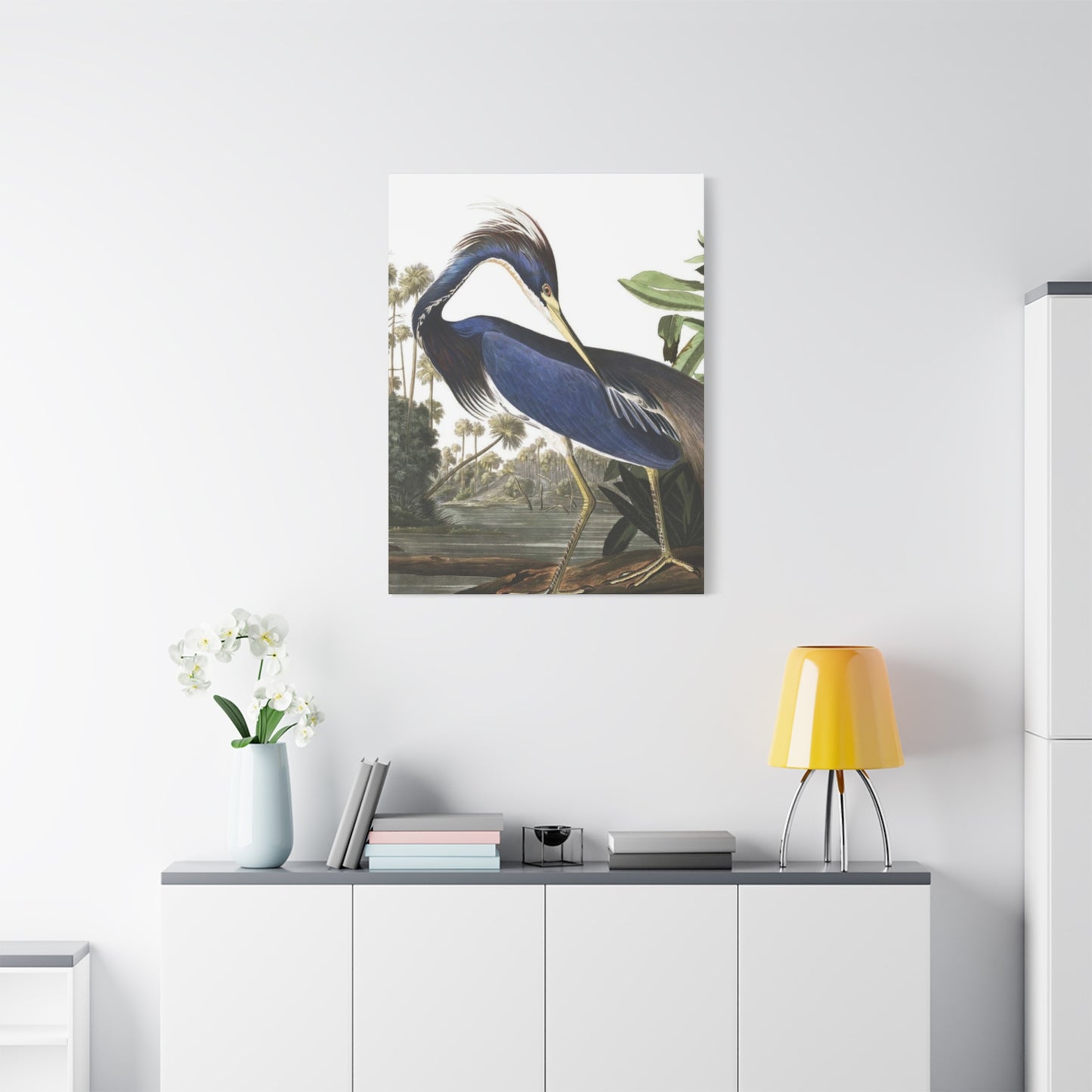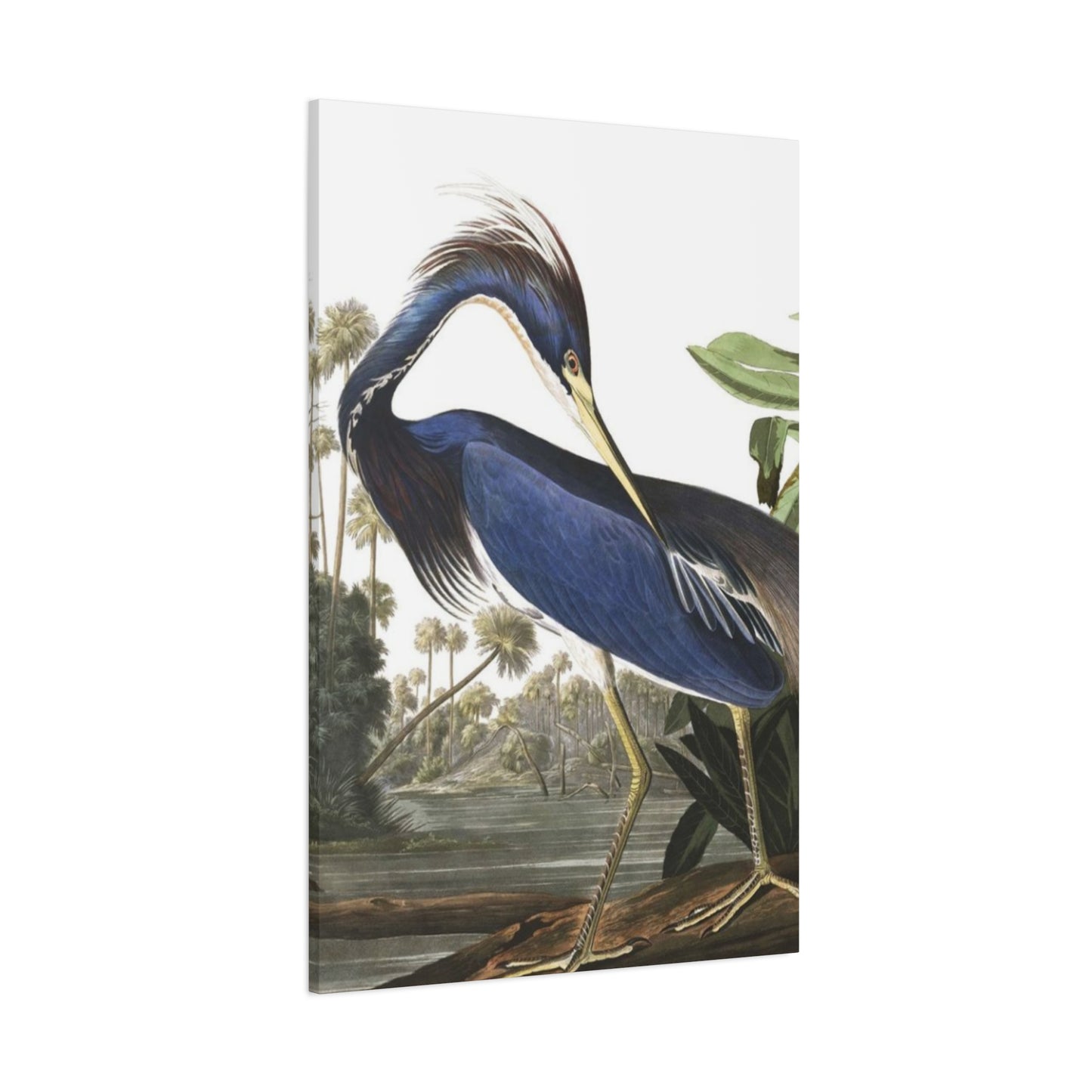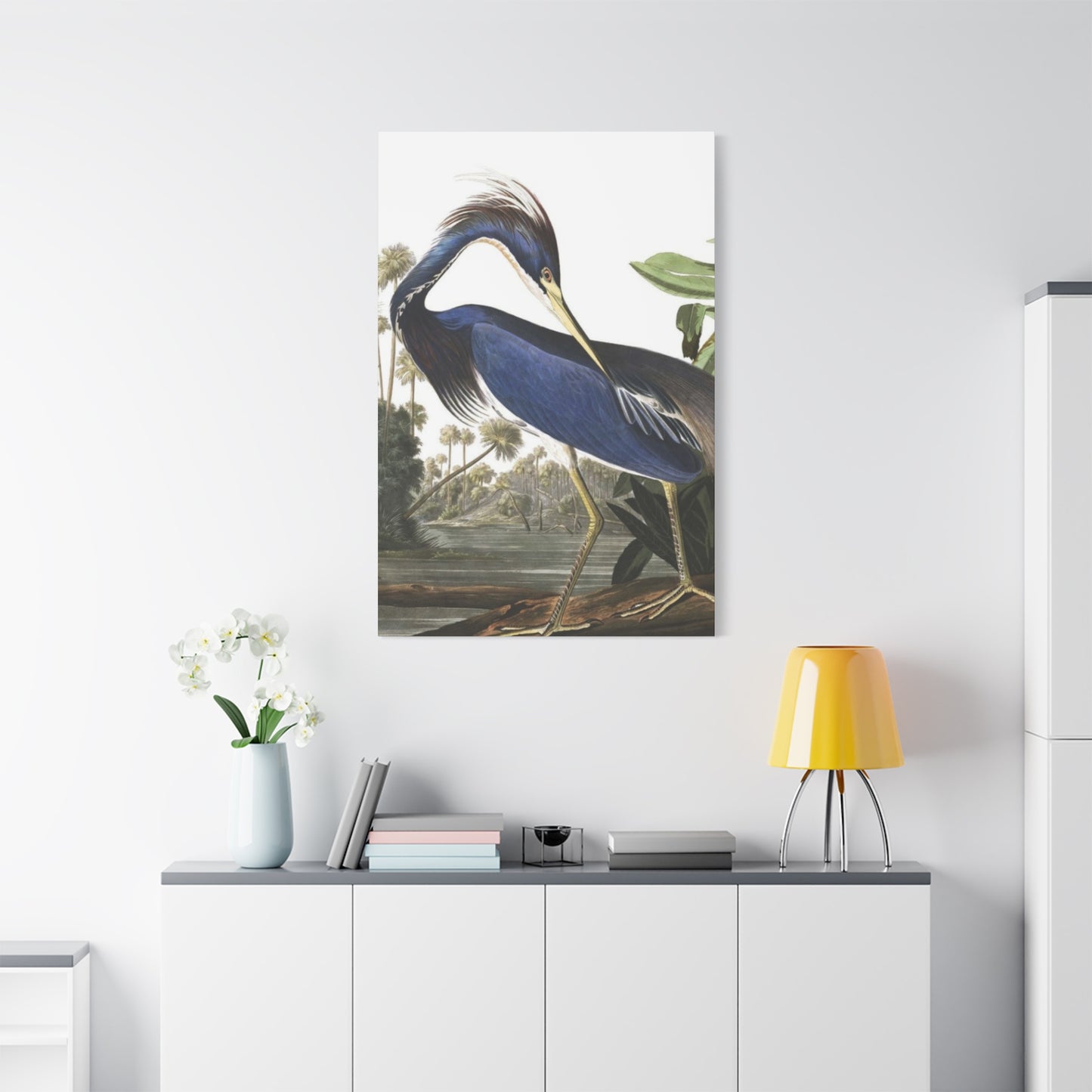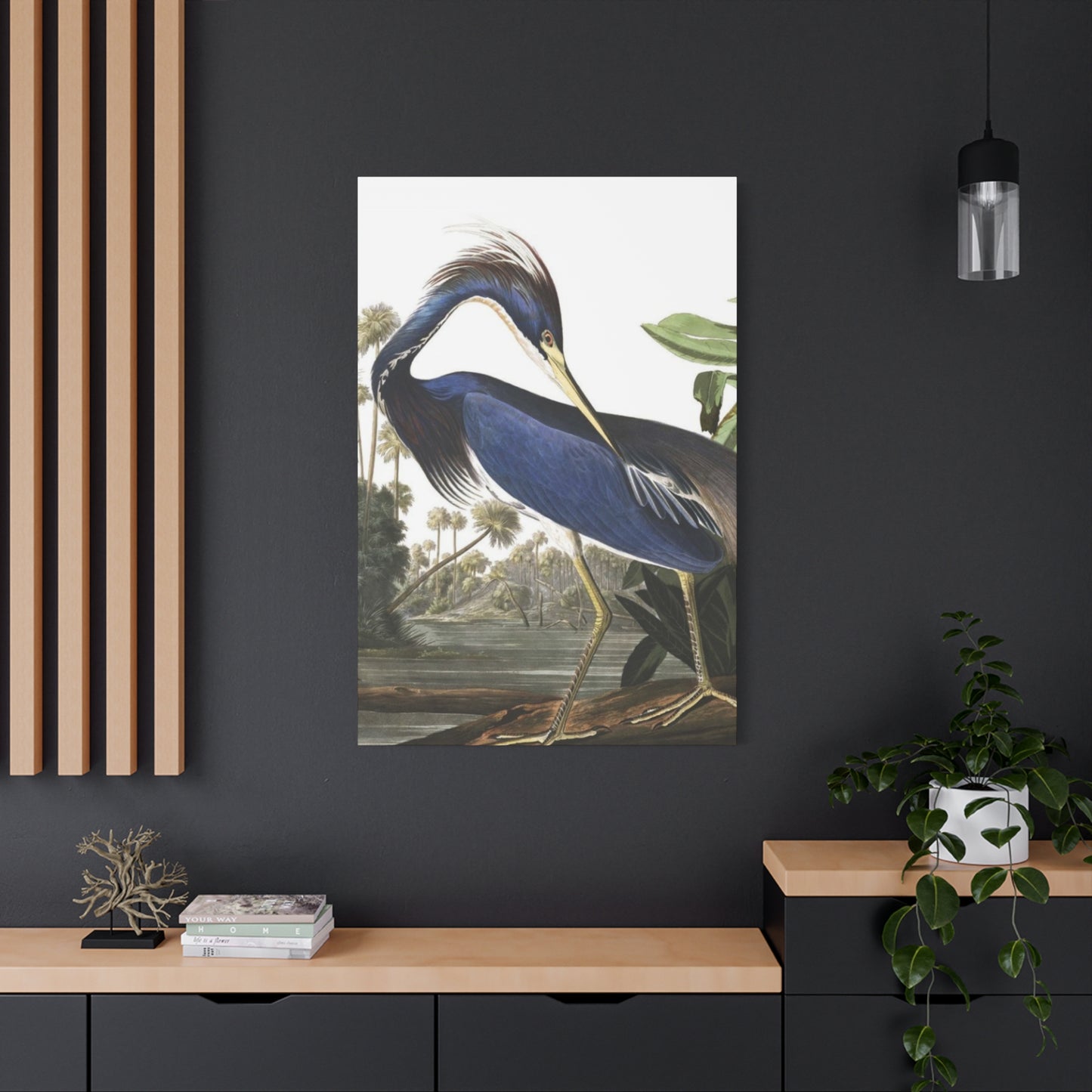Heron Wall Art: Your Complete Resource for Stunning Avian Home Decor
Heron wall art has emerged as one of the most sophisticated and captivating choices for contemporary interior design. These magnificent birds, with their elegant silhouettes and graceful movements, bring a sense of tranquility and natural beauty to any living space. The growing popularity of heron-themed artwork reflects our collective desire to connect with nature while maintaining modern aesthetic sensibilities.
The appeal of heron wall art lies in its versatility and timeless elegance. Whether you prefer realistic depictions or abstract interpretations, these pieces can seamlessly integrate into various design styles, from traditional to contemporary. The natural grace of herons translates beautifully onto canvas, creating artwork that serves as both visual interest and conversation starters.
Capturing Heron Grace on Canvas
Creating stunning heron artwork requires a deep understanding of these magnificent birds' unique characteristics and natural behaviors. Artists who specialize in avian subjects spend considerable time observing herons in their natural habitats, studying their distinctive postures, feeding patterns, and flight dynamics. This careful observation translates into artwork that captures not just the physical appearance of herons but their essential spirit and grace.
The process of capturing heron grace begins with understanding the bird's anatomy and proportions. Herons possess remarkably long necks that can extend and contract in fluid motions, creating dynamic poses that artists love to immortalize. Their elongated legs, sharp beaks, and expansive wingspans offer numerous opportunities for creating visually striking compositions. Professional wildlife artists often work from extensive photographic references, combined with field sketches that capture the subtle nuances of heron behavior.
Color selection plays a crucial role in conveying the ethereal quality of these birds. Great blue herons, the most commonly depicted species, display a sophisticated palette of grays, blues, and whites that can be interpreted in countless ways. Some artists choose to remain faithful to natural coloration, while others explore more interpretive approaches using unexpected color combinations that enhance the emotional impact of the piece.
The challenge of depicting herons lies in balancing anatomical accuracy with artistic interpretation. Successful heron artwork manages to convey the bird's inherent dignity and poise while allowing room for creative expression. This balance requires technical skill combined with an intuitive understanding of what makes these birds so compelling to observe and admire.
Texture plays an important role in heron artwork, particularly when depicting the intricate patterns of their plumage. Artists employ various techniques to suggest the layered feathers that create the bird's distinctive appearance. Watercolor artists might use wet-on-wet techniques to create soft, flowing effects that mirror the fluidity of water environments where herons typically hunt. Oil painters often build up layers of paint to create rich textures that invite closer examination.
The emotional resonance of heron artwork often stems from the birds' association with patience, wisdom, and contemplation. These qualities make heron paintings particularly suitable for spaces dedicated to reflection and relaxation. Artists who successfully capture these intangible qualities create pieces that transcend mere representation, becoming windows into a more peaceful, contemplative state of mind.
Modern digital artists are also exploring new ways to interpret heron imagery, using technology to create innovative compositions that blend photographic realism with abstract elements. These contemporary approaches often emphasize the geometric aspects of heron silhouettes, creating striking modern interpretations that appeal to collectors seeking cutting-edge wildlife art.
The market for high-quality heron artwork continues to grow, with collectors appreciating both traditional and contemporary interpretations. Artists who dedicate themselves to mastering the subtleties of heron representation often develop devoted followings among nature enthusiasts and art collectors alike. This growing appreciation has led to increased opportunities for artists to showcase their work in galleries, art shows, and online platforms dedicated to wildlife art.
Nature-Inspired Heron Wall Decor
Nature-inspired heron wall decor represents a broader movement toward bringing outdoor beauty into interior spaces. This approach goes beyond simple wildlife representation to create environments that feel connected to the natural world. Heron-themed decor works particularly well because these birds embody the peaceful, meditative qualities that many people seek in their home environments.
The philosophy behind nature-inspired design emphasizes harmony between human-made spaces and natural elements. Heron artwork serves as a bridge between these realms, bringing the serenity of wetland environments into urban homes and offices. This connection to nature has been shown to have positive psychological effects, reducing stress levels and promoting a sense of wellbeing.
When incorporating heron wall decor into nature-inspired design schemes, consider the broader ecosystem that these birds inhabit. Wetlands, marshes, and coastal areas provide rich inspiration for complementary design elements. Color palettes drawn from these environments typically feature soft blues, sage greens, warm grays, and earth tones that create cohesive, calming atmospheres.
Natural materials play an important role in nature-inspired heron decor. Frames made from reclaimed wood, bamboo, or other sustainable materials enhance the environmental connection. Stone and ceramic elements can be incorporated to suggest the rocky shorelines and mudflats where herons typically feed. These material choices create a more immersive experience that extends beyond the artwork itself.
The placement of heron artwork within nature-inspired spaces requires careful consideration of natural light patterns. Just as herons are most active during dawn and dusk hours, positioning artwork to take advantage of changing light throughout the day can enhance its visual impact. Morning light streaming across a heron painting can create dramatic shadows that seem to bring the bird to life.
Plant selections can complement heron artwork beautifully, particularly species that might be found in heron habitats. Ornamental grasses, water-loving plants, and specimens with architectural forms that echo the linear qualities of heron silhouettes create visual connections between living and artistic elements. This layered approach to design creates environments that feel authentically connected to nature.
Water features, even small desktop fountains, can enhance the impact of heron artwork by introducing the sound element associated with these birds' habitats. The gentle sound of moving water creates an additional sensory layer that supports the peaceful atmosphere that heron decor is meant to inspire. This multi-sensory approach to design creates more immersive and emotionally satisfying environments.
Seasonal considerations also play a role in nature-inspired heron decor. Just as herons adapt their behavior to changing seasons, room arrangements can be subtly modified throughout the year to reflect these natural cycles. Summer arrangements might emphasize the lush growth of wetland environments, while winter displays could focus on the stark beauty of herons in snow-covered landscapes.
The educational aspect of nature-inspired heron decor should not be overlooked. Thoughtfully chosen pieces can spark conversations about conservation, wetland ecology, and the importance of preserving natural habitats. This deeper engagement with environmental themes adds meaning and purpose to decorative choices, creating spaces that reflect personal values as well as aesthetic preferences.
Large Format Heron Paintings
Large format heron paintings command attention and create dramatic focal points in interior spaces. These substantial artworks allow artists to explore fine details while maintaining the overall impact that comes with impressive scale. The decision to work large opens up new possibilities for composition and detail that simply cannot be achieved in smaller formats.
The impact of scale cannot be underestimated when it comes to heron artwork. A life-sized or larger-than-life heron painting creates an almost physical presence in the room, making viewers feel as though they are sharing space with these magnificent birds. This immersive quality transforms artwork from mere decoration into environmental experience, fundamentally changing how people interact with their living spaces.
Creating large format heron paintings presents unique challenges for artists. The physical demands of working on large canvases require different techniques and approaches compared to smaller works. Artists must consider viewing distances, ensuring that the painting reads clearly both from across the room and up close. This dual requirement often leads to sophisticated layering techniques that reward both distant and intimate viewing.
The investment in large format heron artwork reflects a commitment to creating spaces with significant visual impact. These pieces often serve as the cornerstone of room design, with other elements chosen to complement and support the artwork. This approach to interior design recognizes art as an active participant in creating atmosphere rather than simply decorative accent.
Proper installation of large format heron paintings requires professional consideration of wall strength, lighting, and positioning. The weight of substantial frames and canvases necessitates appropriate hanging systems and wall reinforcement. Professional installation ensures both safety and optimal presentation, protecting valuable artwork while maximizing its visual impact.
The viewing experience of large format heron paintings evolves as observers move through the space. Different angles and distances reveal various aspects of the composition, creating dynamic interactions between viewer and artwork. This changing relationship keeps the artwork fresh and engaging, preventing the visual fatigue that can occur with static decorative elements.
Large format works also offer opportunities for artists to explore environmental context more fully. Expansive canvases can accommodate detailed habitat representations, showing herons within their natural ecosystems. These comprehensive compositions provide educational value while creating immersive visual experiences that transport viewers to wild places.
The market for large format heron paintings includes both individual collectors and institutional buyers such as hotels, restaurants, and corporate offices. These commercial applications recognize the power of substantial wildlife artwork to create memorable environments that enhance customer experiences and reinforce brand identities focused on natural beauty and sophistication.
Storage and transportation considerations for large format heron paintings require specialized handling and climate-controlled environments. Serious collectors often invest in professional storage solutions and shipping services to protect their investments. These practical considerations add to the overall investment but are essential for preserving valuable artwork over time.
The psychological impact of large format nature artwork has been documented in various studies showing reduced stress levels and improved cognitive function in spaces featuring substantial natural imagery. Heron paintings, with their associations with calm and contemplation, are particularly effective in creating environments that support mental wellbeing and productivity.
Heron Art for Bedrooms
Bedrooms require artwork that promotes relaxation and peaceful sleep, making heron art an ideal choice for these intimate spaces. The natural associations with calm water environments and meditative bird behavior create atmospheres conducive to rest and rejuvenation. Selecting appropriate heron artwork for bedrooms involves considering both aesthetic appeal and psychological impact.
The color palette typically associated with heron artwork aligns perfectly with bedroom design principles. Soft blues, grays, and earth tones create calming environments that support relaxation and sleep quality. These natural colors work harmoniously with various bedroom color schemes, from all-white minimalist designs to warmer, earth-toned environments.
Scale considerations for bedroom heron artwork differ from those in living areas or offices. Intimate spaces benefit from pieces that can be appreciated from close viewing distances, such as bedside positions or dressing areas. Medium-sized works often prove more appropriate than large statement pieces, allowing for comfortable viewing without overwhelming the space.
The subject matter within heron artwork can influence its suitability for bedroom use. Peaceful scenes of herons in calm water or contemplative poses are more appropriate than dynamic hunting or flight scenes. The goal is to create visual experiences that support the bedroom's primary function as a retreat from daily stresses and activities.
Placement of heron artwork in bedrooms requires consideration of natural and artificial lighting conditions. Pieces positioned where morning light can illuminate them create gentle wake-up experiences, while artwork visible during evening hours should be positioned to take advantage of softer lighting conditions. The interplay between artwork and lighting contributes significantly to the overall ambiance.
Personal connection to the artwork becomes particularly important in bedroom settings. Heron pieces chosen for bedrooms should resonate on an emotional level, creating positive associations that enhance the personal sanctuary quality of the space. This emotional connection often develops over time, making thoughtful selection crucial for long-term satisfaction.
The symbolic associations of herons can enhance their appropriateness for bedroom use. These birds are often associated with patience, wisdom, and spiritual insight, qualities that align with the reflective nature of bedroom spaces. Some cultural traditions view herons as symbols of good fortune and protection, adding deeper meaning to their presence in personal spaces.
Framing choices for bedroom heron artwork often favor simpler, less elaborate options that maintain the peaceful atmosphere. Natural wood frames or simple metal options allow the artwork to remain the focus while blending harmoniously with bedroom furnishings. Ornate or highly decorative frames might create visual competition that disrupts the calming effect.
The integration of heron artwork with other bedroom decor elements requires careful coordination. Bedding, curtains, and accessory colors should complement rather than compete with the artwork. This harmonious approach creates cohesive environments that feel intentionally designed rather than accidentally assembled.
Privacy considerations in bedrooms may influence artwork choices, particularly in shared spaces. Heron artwork generally maintains appropriate content for all viewers while providing visual interest and natural beauty. This universally appealing quality makes heron art suitable for guest bedrooms where diverse tastes must be accommodated.
Minimalist Heron Wall Art Ideas
Minimalist heron wall art embraces simplicity and negative space to create powerful visual statements with reduced elements. This approach focuses on essential forms and gestures, stripping away unnecessary details to reveal the fundamental grace and elegance of these magnificent birds. The minimalist aesthetic aligns perfectly with contemporary design trends that value quality over quantity and mindful living over material excess.
The philosophy behind minimalist heron art lies in the Japanese concept of "ma," or meaningful emptiness. By reducing the composition to essential elements, artists create space for viewers to project their own experiences and emotions onto the artwork. This interactive quality makes minimalist heron pieces particularly engaging despite their apparent simplicity.
Color reduction plays a crucial role in minimalist heron artwork. Monochromatic schemes or severely limited palettes force artists to rely on form, gesture, and composition rather than complex color relationships. This constraint often leads to more powerful and memorable images that communicate with clarity and directness.
Line quality becomes paramount in minimalist heron art, where every mark must justify its presence. Artists working in this style develop exceptional skill in capturing the essence of heron form with minimal strokes. The challenge lies in maintaining anatomical credibility while reducing complexity to its absolute minimum.
Negative space in minimalist heron artwork serves as an active compositional element rather than simply empty background. The careful balance between positive and negative spaces creates visual tension and interest that keeps viewers engaged despite the reduced visual information. This sophisticated use of emptiness requires considerable skill and aesthetic sensitivity.
The emotional impact of minimalist heron art often exceeds that of more detailed representations. By focusing on essential characteristics, these pieces tap into universal responses to bird flight, grace, and natural beauty. The viewer's imagination fills in missing details, creating personal connections that can be more powerful than literal representations.
Medium selection for minimalist heron art often favors materials that naturally lend themselves to simplified expression. Ink drawings, charcoal sketches, and monotype prints allow artists to work spontaneously while maintaining the clarity and directness that minimalist approaches require. Digital media also offers opportunities for precise control over minimalist compositions.
Contemporary interior design has embraced minimalist heron art as an ideal solution for spaces that require visual interest without visual chaos. These pieces provide focal points that enhance rather than compete with architectural elements and furniture selections. The result is harmonious environments that feel both sophisticated and calming.
The market for minimalist heron art has grown significantly as consumers seek artwork that aligns with simplified living philosophies. Collectors appreciate pieces that create maximum impact with minimum visual noise, particularly in urban environments where sensory overload is a constant concern. This trend has encouraged many artists to explore minimalist approaches to wildlife subject matter.
The production of minimalist heron art often involves extensive preliminary work to identify the essential elements worth preserving. Artists may create numerous detailed studies before arriving at the simplified final composition. This process of reduction requires deep understanding of the subject matter and considerable artistic maturity.
Framing Tips for Heron Paintings
Proper framing significantly enhances the presentation and longevity of heron paintings while protecting valuable artwork from environmental damage. The framing decision impacts both the aesthetic appeal and preservation qualities of the piece, making careful consideration essential for serious collectors and casual art lovers alike. Understanding the various options and their implications helps ensure optimal results for different types of heron artwork.
Frame style selection should complement rather than compete with the heron artwork. Traditional realistic paintings often benefit from classic frame profiles that provide substantial presence without overwhelming the image. Contemporary or abstract heron pieces may require simpler, more streamlined framing that allows the artwork to remain the primary focus. The goal is to create harmony between frame and image that enhances the overall viewing experience.
Color coordination between frames and heron artwork requires subtle consideration of the dominant tones within the painting. Neutral frame colors such as silver, gold, black, or natural wood tones typically provide safe choices that won't conflict with the artwork. However, more adventurous color choices can create striking effects when carefully selected to complement specific elements within the painting.
Material quality in frame construction affects both appearance and longevity. Solid wood frames provide traditional appeal and excellent durability, while metal frames offer contemporary aesthetics and precise construction. Composite materials can provide cost-effective solutions while maintaining attractive appearances. The choice often depends on the artwork's value, intended location, and personal aesthetic preferences.
Conservation framing techniques protect valuable heron paintings from environmental damage caused by light, humidity, and pollutants. Acid-free matting materials prevent chemical damage to artwork over time, while UV-filtering glazing reduces light-induced fading. Museum-quality framing techniques create protective environments that preserve artwork for generations, making them worthwhile investments for significant pieces.
Matting decisions significantly impact the presentation of heron artwork, particularly for works on paper or smaller canvas pieces. Mat colors should complement the artwork without distracting from it, with neutral tones typically providing the safest choices. Mat width affects the visual weight of the presentation, with wider mats creating more formal appearances suitable for traditional interiors.
Glazing options for heron paintings include regular glass, anti-reflective glass, and acrylic alternatives. Each option provides different benefits in terms of protection, visibility, and cost. Anti-reflective glass virtually eliminates reflection issues but comes at premium cost. Acrylic glazing provides safety benefits in high-traffic areas or spaces with young children, though it can develop scratches over time.
Professional versus do-it-yourself framing decisions often depend on artwork value and complexity requirements. While simple pieces might be successfully framed using consumer-grade materials, valuable or complex heron paintings typically benefit from professional framing services that ensure proper techniques and material quality. Professional framers also provide expertise in conservation techniques and aesthetic decisions.
The environmental conditions where framed heron paintings will be displayed influence framing decisions. High humidity areas such as bathrooms require moisture-resistant materials and construction techniques. Direct sunlight exposure necessitates UV filtering glazing and fade-resistant frame finishes. These environmental considerations prevent damage and maintain appearance over time.
Custom framing allows for personalized solutions that address specific requirements and preferences. Custom frame profiles can be created to match existing decor elements, while unusual artwork dimensions may require custom-sized frames. Though more expensive than standard options, custom framing provides optimal results for important pieces or unique design situations.
Vintage vs. Modern Heron Art
The distinction between vintage and modern heron art reflects broader changes in artistic techniques, cultural attitudes, and aesthetic preferences that have evolved over decades. Understanding these differences helps collectors make informed decisions while appreciating the unique qualities that each era brings to wildlife artwork. Both vintage and contemporary heron pieces offer distinct advantages and appeal to different collecting philosophies.
Vintage heron art, typically defined as pieces created between the 1920s and 1970s, often displays characteristics reflecting the artistic conventions and cultural values of their time periods. These works frequently emphasize detailed realism and natural history accuracy, reflecting scientific illustration traditions and conservation movement ideals. The craftsmanship evident in vintage pieces often showcases techniques and approaches that have become rare in contemporary practice.
The materials and techniques used in vintage heron art differ significantly from modern approaches. Traditional media such as oil paints, watercolors, and lithographic prints were created using formulations and methods that have since evolved. These historical processes often produced unique visual qualities that cannot be exactly replicated using contemporary materials, giving vintage pieces distinctive character and authenticity.
Subject matter treatment in vintage heron art typically emphasizes the birds within their natural habitats, often including detailed environmental context that tells stories about ecosystem relationships. These comprehensive approaches reflect earlier artistic traditions that viewed wildlife art as both aesthetic and educational medium. The attention to habitat detail provides valuable historical documentation of natural environments as they existed decades ago.
Modern heron art embraces contemporary artistic movements and reflects current cultural perspectives on wildlife and environmental issues. Abstract interpretations, mixed media approaches, and digital techniques offer new possibilities for expressing the essence and beauty of these magnificent birds. Contemporary artists often focus on emotional impact and conceptual meaning rather than strict representational accuracy.
The investment potential of vintage versus modern heron art varies considerably based on artist reputation, rarity, and market demand. Established vintage artists with documented provenance often command higher prices and show more stable appreciation over time. However, contemporary artists gaining recognition can provide opportunities for collectors who appreciate newer approaches while building collections with future potential.
Condition considerations differ significantly between vintage and modern heron art. Older pieces may show age-related deterioration requiring professional conservation attention, while newer works typically maintain their original appearance with proper care. The long-term stability of modern materials and techniques is still being evaluated, making their preservation requirements somewhat uncertain.
Authentication challenges are more common with vintage heron art, particularly for works by well-known artists. The development of sophisticated forgery techniques and the passage of time can make attribution difficult without expert evaluation. Modern pieces, especially those purchased directly from artists or reputable galleries, typically come with clear provenance and authentication documentation.
Aesthetic integration considerations vary between vintage and modern heron art depending on interior design styles. Vintage pieces often complement traditional decor schemes and classic interior design approaches. Modern heron art typically aligns better with contemporary design philosophies and cutting-edge architectural environments. However, eclectic mixing of periods can create interesting and dynamic interior compositions.
The philosophical approaches to wildlife representation differ markedly between vintage and modern heron art. Earlier works often emphasized the majesty and pristine beauty of natural subjects, while contemporary pieces may address environmental concerns, habitat loss, or human impact on wildlife populations. These different perspectives reflect changing relationships between human society and the natural world.
Collecting focus strategies may emphasize either vintage or modern heron art depending on personal interests and investment goals. Some collectors prefer the historical significance and established market values of vintage pieces, while others enjoy participating in contemporary artistic development and supporting living artists. Both approaches offer rewarding collecting experiences with different benefits and considerations.
Heron Art for Office Spaces
Incorporating heron art into office environments creates professional atmospheres that promote productivity while maintaining connection to natural beauty. The calming presence of these elegant birds can counteract the stress and artificiality often associated with workplace environments. Selecting appropriate heron artwork for office spaces requires balancing professional appearance with personal expression and psychological benefits.
The psychological benefits of nature imagery in workplace environments have been extensively documented through research studies. Heron artwork can reduce stress levels, improve concentration, and enhance creative thinking by providing visual respite from intense work activities. The meditative qualities associated with these birds make them particularly effective in creating productive work atmospheres.
Professional image considerations influence heron art selection for office environments. Artwork choices should reflect competence, sophistication, and good judgment while avoiding controversial or distracting content. Heron paintings naturally align with these requirements, presenting timeless beauty and elegant aesthetics that enhance professional credibility without creating inappropriate distractions.
Scale and placement of heron artwork in offices must accommodate the functional requirements of work spaces. Large pieces work well in reception areas or conference rooms where they can create impressive focal points. Smaller works are more appropriate for individual offices or workstations where they provide personal inspiration without overwhelming limited space or competing with necessary work materials.
The corporate culture and industry context influence appropriate heron art selections for office environments. Conservative business environments may favor traditional realistic depictions, while creative industries might embrace more contemporary or abstract interpretations. Understanding the workplace culture ensures that artwork choices enhance rather than conflict with professional expectations and colleague relationships.
Color considerations for office heron art should support productive work environments while complementing existing decor schemes. Neutral color palettes and sophisticated tones typically work better than bright or distracting colors that might interfere with concentration. The goal is to create visual interest that enhances rather than detracts from work activities.
Lighting conditions in office spaces significantly impact the presentation of heron artwork. Fluorescent lighting, window glare, and changing natural light throughout the day all affect how artwork appears. Selecting pieces that remain attractive under various lighting conditions and positioning them to avoid problematic glare ensures consistent visual appeal throughout work days.
Client and colleague reactions to office heron art can influence professional relationships and business outcomes. Thoughtfully chosen pieces often serve as conversation starters that help build rapport and demonstrate personal interests beyond work activities. This human connection aspect of office art can enhance business relationships while creating more pleasant work environments for everyone involved.
The maintenance and security of office heron art require consideration of high-traffic environments and multiple users of shared spaces. Proper hanging systems, protective framing, and regular cleaning schedules help preserve artwork in demanding office conditions. Security measures may be necessary for valuable pieces, particularly in spaces with public access or high staff turnover.
Investment in office heron art can be justified through improved employee satisfaction, enhanced client impressions, and increased workplace productivity. Quality artwork demonstrates organizational commitment to creating positive work environments, which can aid in employee recruitment and retention. These indirect benefits often exceed the direct costs of acquiring and maintaining office art collections.
The flexibility to relocate or update office heron art allows for changing displays that maintain visual freshness and reflect evolving business needs. Rotating artwork prevents visual familiarity that can reduce psychological benefits over time. This approach also allows for seasonal variations or temporary exhibitions that keep office environments engaging and dynamic.
Gallery Wall Ideas with Herons
Creating gallery walls featuring heron artwork allows for complex visual narratives that celebrate these magnificent birds through multiple perspectives and artistic interpretations. The gallery wall approach provides opportunities to combine various sizes, styles, and media types while maintaining thematic coherence focused on heron subjects. This sophisticated display method transforms blank walls into engaging visual experiences that reward extended viewing.
The foundation of successful heron gallery walls lies in establishing a unifying theme or concept that connects diverse pieces into a coherent whole. Themes might focus on different heron species, seasonal variations, habitat diversity, or artistic interpretation styles. Having a clear organizing principle prevents gallery walls from appearing random or chaotic while allowing for creative diversity within the collection.
Size variation within heron gallery walls creates visual rhythm and prevents monotonous arrangements that fail to hold viewer interest. Combining large anchor pieces with medium and small works establishes hierarchy while ensuring that each piece contributes meaningfully to the overall composition. The interplay between different scales creates dynamic relationships that enhance the impact of individual pieces.
Color coordination across multiple heron artworks requires careful consideration of how different pieces interact visually. Successful gallery walls often feature a limited color palette that appears consistently across various pieces, even when the individual works were created by different artists. This color harmony creates visual unity while allowing for stylistic diversity.
Framing consistency or intentional variation affects the cohesiveness of heron gallery walls. Matching frames create formal, unified appearances that emphasize the artwork over the presentation elements. Alternatively, varied framing that maintains consistent style qualities can add visual interest while preserving overall harmony. The choice depends on the desired aesthetic outcome and the nature of the individual pieces.
Layout planning for heron gallery walls benefits from floor-based arrangement sessions before making wall commitments. Paper templates cut to match frame sizes allow for experimentation with different configurations without damaging walls or artwork. This preparatory work helps identify optimal arrangements that balance visual weight and create pleasing relationships between adjacent pieces.
Lighting design for gallery walls requires consideration of multiple pieces with potentially different lighting needs. Even illumination across the entire wall area prevents some pieces from being overshadowed by brighter neighbors. Professional gallery lighting techniques can be adapted for residential installations to ensure optimal presentation of all included artworks.
The narrative potential of heron gallery walls can tell stories about bird behavior, habitat conservation, or artistic interpretation evolution. Sequential arrangements might show different life cycle stages, seasonal changes, or the progression from realistic to abstract interpretation styles. These storytelling approaches add intellectual engagement to the visual appeal of the collection.
Expansion possibilities should be considered when planning heron gallery walls, as collections often grow over time. Leaving planned spaces for future additions or designing layouts that can accommodate changes prevents the need for complete reinstallation when new pieces are acquired. This forward-thinking approach allows collections to evolve organically.
The viewing experience of heron gallery walls changes based on observer position and movement through the space. Different viewing angles reveal various relationships between pieces, keeping the display dynamic and engaging. This changing perspective quality makes gallery walls particularly suitable for spaces where people spend extended time or pass through frequently.
Elegant Herons in Flight Artwork
Herons in flight represent the pinnacle of avian grace and power, making them compelling subjects for artwork that captures dynamic movement and ethereal beauty. The challenge of depicting flight requires artists to understand complex wing mechanics, body positioning, and aerodynamic principles while maintaining aesthetic appeal and emotional resonance. Successfully executed flight scenes create dramatic focal points that bring energy and movement to static interior spaces.
The anatomical complexity of herons in flight presents significant challenges for artists seeking accurate representation. These birds employ unique flight characteristics including slow, deliberate wing beats and extended neck positioning that differs from their terrestrial poses. Understanding these distinctive flight patterns enables artists to create convincing depictions that capture both the physical reality and spiritual essence of airborne herons.
Wing position and movement phases offer various compositional opportunities for flight artwork. The upstroke and downstroke positions create different silhouettes and energy expressions, from the powerful thrust of downward wing motion to the elegant extension of upward sweeps. Artists often choose specific flight phases based on the emotional impact they wish to achieve and the compositional requirements of their intended format.
The environmental context of heron flight artwork enhances the sense of movement and natural habitat connection. Wetland backgrounds, cloud formations, and atmospheric effects provide visual anchors that establish scale and suggest the vastness of natural flying environments. These contextual elements transform individual bird portraits into comprehensive ecosystem representations.
Light and shadow play crucial roles in conveying the three-dimensional reality of herons in flight. The translucency of wing feathers, the play of light across curved surfaces, and the cast shadows on underlying terrain all contribute to the illusion of airborne reality. Masterful handling of light effects can make viewers feel the rush of wind and the freedom of flight.
Color temperature and atmospheric perspective help establish depth and distance in heron flight compositions. Cooler colors and reduced contrast in background elements push them into the distance, while warmer, more saturated colors bring foreground elements forward. This layered approach to color creates spatial relationships that enhance the three-dimensional illusion of flight.
The emotional impact of flight imagery taps into universal human desires for freedom and transcendence. Herons in flight artwork often evokes feelings of liberation from earthly constraints and connection to broader natural forces. This psychological resonance makes flight-themed pieces particularly powerful as focal points in residential and commercial spaces.
Compositional approaches to heron flight artwork range from single bird studies to complex formations involving multiple individuals. Group flight scenes can suggest migration patterns, family relationships, or territorial behaviors while creating more complex visual rhythms. The interaction between multiple flying birds adds narrative depth to otherwise purely aesthetic compositions.
The medium selection for heron flight artwork influences the final impact and suitable applications. Watercolor techniques can suggest the fluidity and transparency associated with aerial movement, while oil paintings allow for detailed feather rendering and atmospheric effects. Digital media offers possibilities for capturing motion blur and other effects that enhance the sense of dynamic movement.
Contemporary interpretations of heron flight often incorporate abstract elements that emphasize movement and energy over literal representation. These stylized approaches can convey the essence of flight through simplified forms, exaggerated gestures, and non-naturalistic color schemes. Such interpretations appeal to modern audiences while maintaining connection to the natural source of inspiration.
Using Heron Prints to Enhance Mood
The psychological impact of heron prints on interior environments extends far beyond simple decoration, actively influencing mood, stress levels, and overall wellbeing through careful selection and placement. Understanding how different types of heron imagery affect emotional responses enables intentional use of these artworks to create desired atmospheric qualities in residential and commercial spaces. The inherent associations with calm water environments and meditative bird behaviors make heron prints particularly effective mood enhancement tools.
Color psychology plays a fundamental role in how heron prints influence emotional states within interior environments. The blue-gray color palettes commonly associated with these birds naturally promote feelings of calm and relaxation by mimicking the colors of peaceful water and sky environments. These cool tones have been scientifically shown to reduce blood pressure and promote restful states, making heron prints excellent choices for stress reduction applications.
The subject matter within heron prints significantly affects their mood-enhancing potential. Scenes depicting herons in calm, reflective poses naturally promote meditative states and peaceful contemplation. Active hunting or feeding scenes might create different emotional responses, potentially increasing alertness and engagement rather than relaxation. Understanding these distinctions helps in selecting appropriate imagery for specific mood enhancement goals.
Seasonal variations in heron print imagery can be used to combat mood disorders related to changing weather patterns and reduced daylight exposure. Winter scenes featuring herons in snowy environments might help normalize seasonal changes, while spring imagery suggesting renewal and growth can counteract depression associated with extended winter periods. This therapeutic application of artwork demonstrates its potential beyond purely aesthetic purposes.
The size and placement of heron prints within spaces affects their psychological impact through principles of visual dominance and attention allocation. Large prints positioned at eye level command attention and can serve as focal points for meditation or stress relief activities. Smaller prints placed in transitional areas provide gentle mood enhancement without overwhelming the primary functions of those spaces.
Scientific research on biophilic design principles supports the mood-enhancing effects of nature imagery including heron prints. Human beings demonstrate measurable physiological responses to natural imagery, including reduced cortisol levels and improved cognitive function. These responses occur even when the nature connection is purely visual, making high-quality heron prints effective tools for improving indoor environmental quality.
The lighting conditions under which heron prints are viewed significantly influence their mood-enhancing effectiveness. Natural light enhances the psychological benefits of nature imagery, making placement near windows particularly beneficial. However, artificial lighting can be designed to optimize the mood-enhancing qualities of heron prints through careful consideration of color temperature and intensity levels.
Personal associations and memories connected to heron imagery affect individual responses to these prints in ways that cannot be predicted through general psychological principles. Viewers with positive experiences involving water environments or bird watching often show stronger positive responses to heron artwork. Understanding these personal connections helps in selecting pieces that will provide maximum mood enhancement benefits for specific individuals.
The integration of heron prints with other mood-enhancing environmental elements creates synergistic effects that exceed the sum of individual components. Combining heron artwork with natural materials, plants, and calming color schemes creates comprehensive environments optimized for positive psychological impact. This holistic approach to mood enhancement represents sophisticated interior design thinking.
Therapeutic applications of heron prints in healthcare settings, senior living facilities, and counseling environments demonstrate their clinical potential for mood improvement. Professional healthcare designers increasingly specify nature-themed artwork as part of healing environment strategies. The success of these applications provides evidence for the mood-enhancing potential of heron prints in residential settings.
Coastal-Themed Heron Wall Art
Coastal-themed heron wall art captures the essence of seaside environments where these magnificent birds naturally thrive, creating interior spaces that evoke the tranquility and beauty of ocean shores. This specialized category combines the graceful presence of herons with maritime elements such as dunes, marshes, lighthouses, and coastal vegetation to create comprehensive environmental portraits. The result is artwork that transports viewers to peaceful shoreline settings regardless of their actual geographic location.
The natural habitat overlap between herons and coastal environments provides authentic foundations for this artistic theme. Great blue herons, snowy egrets, and other species commonly inhabit salt marshes, tidal pools, and protected bays where they hunt for fish and crustaceans. This legitimate ecological connection ensures that coastal-themed heron art maintains biological accuracy while serving aesthetic purposes.
Color palettes for coastal-themed heron art typically draw from maritime environments including weathered grays, sea foam greens, sandy beiges, and various blue tones ranging from deep ocean hues to pale sky colors. These naturally harmonious color combinations create cohesive atmospheres that suggest ocean proximity and the relaxed lifestyle associated with coastal living.
Conclusion
Heron Wall Art: Your Complete Resource for Stunning Avian Home Decor provides a comprehensive guide to incorporating the elegance, grace, and serenity of herons into interior spaces. These artworks celebrate the beauty of herons in their natural habitats, capturing their poised movements, delicate plumage, and reflective interactions with water and surroundings. Through careful composition, color harmony, and artistic detail, heron-themed wall art transforms ordinary walls into serene focal points, appealing to nature enthusiasts, art collectors, and interior designers seeking a sophisticated, wildlife-inspired aesthetic.
Integrating heron wall art into home interiors allows for the creation of spaces that are peaceful, visually captivating, and emotionally enriching. In living rooms, bedrooms, or study areas, these artworks serve as stunning focal points that promote relaxation, mindfulness, and a connection with nature. In offices, studios, or creative environments, they inspire focus, creativity, and tranquility, offering a visual escape from the pressures of daily life. The versatility of heron-inspired art ensures it complements a wide range of décor styles—from modern and minimalist to coastal, rustic, or eclectic interiors—adding depth, elegance, and thematic cohesion to any space.
The artistry behind heron wall art emphasizes realism, movement, and environmental context. Artists carefully render the intricate feather patterns, the elegant lines of the bird’s body, and the reflective surfaces of water to create a lifelike yet aesthetically refined representation. Techniques such as layered textures, soft gradients, and detailed brushwork enhance the sense of depth and serenity, making each piece more than decoration—it becomes a visual meditation on the beauty and grace of wildlife.
Ultimately, Heron Wall Art elevates interiors by merging natural inspiration with refined artistic expression. It transforms walls into captivating spaces that celebrate the elegance, balance, and serenity of avian life. By featuring these artworks, individuals can enrich their homes, offices, or creative environments with timeless beauty, peaceful ambiance, and a sophisticated connection to nature—making it an essential addition for any wildlife-inspired décor.


















